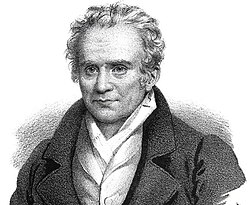Güldenstädt Johann

Güldenstädt, Johann Anton [26 April (7 May) 1745, Riga – 23 March (3 April) 1781, St. Petersburg], was a German scientist and traveler. He became a member of the St. Petersburg Imperial Academy of Sciences in 1771 and was president of the “Free Economic Society” from 1780. He studied at the Berlin Medical-Surgical School and defended his doctorate at the University of Frankfurt (Oder) in 1767. In 1768, at the invitation of the Russian Academy of Sciences, he arrived in St. Petersburg to participate in expeditions from 1768 to 1774.
Güldenstädt’s expedition traveled through the North Caucasus from January 1770 to August 1771 and arrived in Georgia in September 1771, where he stayed until October 1772. He traveled through Kartli, Kakheti, Imereti, Racha, and reached the borders of Guria and Samegrelo. He met with the kings Erekle II and Solomon I. From November 1772 to July 1773, he returned to the North Caucasus. On 2 March 1775, he returned to St. Petersburg.
After Güldenstädt’s death, academician P. Pallas published his notes in two volumes under the title "Travels in Russia and the Mountainous Regions of the Caucasus". This work preserves many valuable details about Georgia and the North Caucasus, containing rich information about geography and mineralogy. Güldenstädt also reviewed historical context of visited regions, described architectural monuments, presented folklore material, and wrote in detail about the local flora and fauna. The book also gives information about natural resources.
The author provides rich information about the political situation of Georgian kingdoms and principalities, their government systems, social relations, agriculture, local industries, trade and crafts, markets and prices, currency, units of measurement and weight, education, and legislation. He recorded important ethnographic information (e.g., marriage and burial customs, housing, transportation, winemaking methods, and more). As a physician, he was interested in local methods of treating the sick. He described smallpox vaccination and listed many medications used in Georgia.
At the end of his work, the author mentions notable historical figures (kings, officials, residents, etc.). During his travels in the Caucasus, Güldenstädt collected lexical material and compiled comparative wordlists of languages spoken in the region. Each list contains about 340 words, including nouns, pronouns, numerals, adjectives, and verbs, grouped by meaning. This was the first time such extensive lexical material was recorded for many Iberian-Caucasian languages, making it a valuable source in the study of these languages.
Based on the comparison of lexical materials, Güldenstädt identified six language groups: 1. Georgian (Georgian, Mingrelian, Svan), 2 Kist (Chechen, Ingush, Tushetian), 3 Lek language (Khunzakh-Dido, Antsukh, Char, and others), 4. Circassian (Kabardian and Abkhaz), 5. Ossetian, 6. Tatar.
He was the first to propose the idea of genealogical relationships among the members of each group.
Güldenstädt’s map of the Caucasus (“Mappa fundamentalis partem Caucas”), based on Vakhushti’s maps, holds great importance for the historical-geographical study of Georgia and the Caucasus in the second half of the 18th century. The map covers the territory from Telavi to Kutaisi and from Georgia’s southern border to the southern border of the Astrakhan province. More than 530 toponyms are marked, most of them in Georgian territory, including rivers like the Mtkvari (labeled "Kurat"); and 39 places in and around Tbilisi: Didube, Dighomi, Teleti, Kojori, Kumisi, Martqopi, Mtskheta, Navtlukhi, Norio, Saguramo, Shindisi, and Tsalaskuri.
Literary works: მოგზაურობა საქართველოში, გ. გელაშვილის გამოც., ტ. 1–2, თბ., 1962–64.
Literature: П о л и е в к т о в М. А., Европейские путешественники ХII–ХVIII вв. по Кавказу, Тфл., 1935.
V. Gamrekeli
G. Gelashvili


